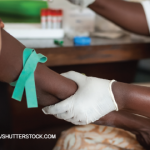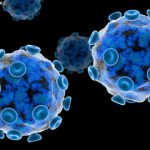Although debate took place regarding the epidemiology and significance of these rheumatic manifestations, they clearly were distinct in many ways: they included an array of conditions, some of which were previously unrecognized, such as painful articular syndrome, HIV arthritis and the diffuse lymphocytosis syndrome (DILS). Other inflammatory diseases were also recognized, some of which, at times, were found to have distinctive features; these included reactive arthritis, psoriatic arthritis, spondyloarthropathy and other myopathic diseases and vasculitis, all of which have been extensively reviewed.9,10,11
With the ushering in of the era of cART and the dramatic shift in the clinical epidemiology of HIV disease, a remarkable deceleration of these inflammatory rheumatic complications occurred.11,12 Today, despite the prolongation of life and an aging HIV-infected population, newly trained rheumatologists see few such cases.
In place of those rheumatic complications previously described in patients with advanced disease, a new array of rheumatic disorders have emerged; in addition, a growing number of aging HIV-infected patients appear to have comorbid de novo rheumatic conditions, covering the gamut of systemic autoimmune and autoinflammatory diseases, posing new clinical challenges. Three disorders deserve special attention at present: avascular necrosis, osteoporosis and immune reconstitution inflammatory syndrome.
Avascular Necrosis
Over the past decade, the incidence of avascular necrosis of bone in the HIV-infected population appears to be rising and may be as high as 0.3–3.4/1,000 person years compared with the general population, in which the incidence is estimated at 0.03–0.04/1,000 person years.13 A small study in asymptomatic HIV-infected men based on screening MRI revealed a prevalence of 4.4% in the HIV-positive men and 0% in corresponding uninfected controls.14
The etiology of this complication is poorly understood, with conflicting data on a number of disease- and treatment-related variables, including the length of exposure to and class of ART, CD4 nadir, presence of hyperlipidemia and history of glucocorticoid use. Regardless, awareness of this complication is now essential in the context of evaluating bone and joint pain in HIV-infected individuals.
Osteoporosis
A substantial body of data now exists to support that low bone density is more prevalent in HIV-positive individuals compared with HIV-negative controls.13 A number of factors, both traditional and disease related, may contribute to bone loss, including the use of certain ARTs, especially in the first few years of therapy.13,15 A loss of 2–6% of bone mineral density has been observed over the first two years of therapy comparable to losses observed in the first two years of menopause in a typical HIV-negative population.15


